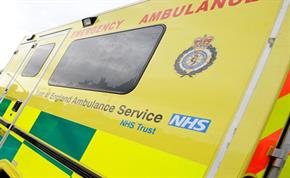
Good ventilation has proved a vital component in combatting the spread of COVID-19. Spread of COVID-19 occurs most often when an infected person is in close or direct contact with another person and the risk is increased in crowded and poorly ventilated spaces, particularly when people spend long periods of time together in close proximity.
Ventilation involves introducing clean air into a space while removing stale air, to maintain or improve air quality. Ventilation can be achieved naturally (e.g. by opening a window) or by a mechanical system.
However, ventilation should not be seen as a standalone measure. It should be implemented as part of a comprehensive set of controls, such as physical distancing, wearing a mask and frequent hand hygiene. Each of these points are important to protect you against COVID-19 infection.
Premises
Ventilation is a significant factor in reducing the risk of transmission, and wherever possible natural ventilation should be encouraged. Whether that be opening a window/door a little on scene or opening the window in the crew rooms, office areas, training rooms and break out areas.
Recirculation units (including air conditioning) can mask poor ventilation as they only make an area feel more comfortable. It is not encouraged to use fans in shared office environments. Desk fans are difficult to clean and can harbour pathogens. Furthermore, desk fans may transmit fine particles to neighbouring colleagues risking an outbreak of infectious disease.
Due to the prevalence of COVID-19 currently, desk fans and recirculatory air conditioning systems pose an increased risk of infection transmission. For this reason, it is vital that the use of these items is risk assessed and that other options are explored. The use of these items is not encouraged in from an IPC perspective but may be beneficial from a H&S perspective regarding thermal comfort.
Considerations prior to fan/air conditioning use
Recommendations when using fans or air conditioning units is considered necessary
Air exchange is the key to cooling the environment and reducing the risk of COVID-19 and this is done through opening windows and doors where possible.
Ambulance Vehicles
Natural ventilation: ensure windows are opened regularly and whilst travelling in the cab and saloon area (with the exception of travelling in emergency mode).
Mechanical ventilation: the CEN standard specification for ambulance ventilation system is 20 air changes per hour as a minimum.
All ambulance vehicles must meet these regulations. For perspective, the standard for hospital treatment rooms remains 6-12 air changes per hour. Air conditioning or ventilation should be set to extract and not recirculate the air within the vehicle if this option is available.
In the event of a delay in handing your patient over at the receiving facility, options are to leave doors open and/or open them regularly where possible, and/or maintain ventilation systems operating (set on extract where possible). This may require the vehicle to remain running or started periodically to allow the ventilation system to operate. This will help to dilute the level of virus particles and maintain air circulation within the patient compartment.
Published 28th July 2022